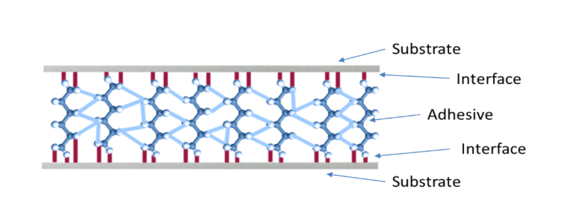The Benefits of Benchmarking Surface Quality in Manufacturing
Lucas Dillingham, of surface inspection technology provider Brighton Science, offers insights for consistent, successful adhesion of coatings.
#asktheexpert
Q: We are having inconsistent results with the adhesion of liquid coatings. What are some steps to take to ensure consistent and quality results?
A: Certainty is the goal of every manufacturing process. Manufacturers need to have total confidence that every aspect of their production process will go according to plan. The adhesion process needs to be controlled just like any other production operation, with accuracy and ongoing monitoring. Manufacturers need to know that when they apply an adhesive, coating, paint, ink or any other surface treatment, it will stick every single time.
Featured Content
How is that Level of Certainty Achieved?
The criterion for what a properly prepared material surface actually is needs to be adjusted in the minds of manufacturing and quality managers. The new benchmark needs to be founded on a scientific understanding of what is occurring on the surface.
All surface prep processes are affecting the top three to five molecular layers of the material.
By removing material (e.g., abrading, media blasting, particulate washing) and by modifying the chemical nature of the surface (e.g., plasma treatment, solvent cleaning, chemical etching) the uppermost molecular layers are being altered or displaced. This is a crucial principle to understand in order to fully control adhesion outcomes, and it is usually the least understood element in manufacturing.
There are three underlying elements that need to be controlled for successful adhesion:
1. Composition of the adhesive or coating material
2. The adhesive or coating application and curing processes
3. The composition and properties of the first few molecular layers of the surface receiving the adhesive or coating: 'Surface Preparation'

Typically, the surface preparation element gets short shrift when manufacturers are planning adhesion processes or trying to solve existing adhesion failure. Without focusing on how control of this key element affects adhesion, it can feel like a never-ending cycle of trial and error. Since adhesion is a function of chemical reactions occurring on the surfaces of two components bonding to each other, it needs to be approached as more than a mechanical operation.
Consistently Achieve the Change You Require
When manufacturers can rely on the consistency of their surface preparation process to achieve the chemically favorable surface they require to ensure adhesion, then they can begin to build that certainty they hope for. The clearest and surest path to certainty is to quantify each of those aspects of the production process where uncertainty lurks.
There is an inevitable variation in production processes and environments, but if the focus of control is on the material surface, then the impact of these variations can be understood and compensated for. Implementing a quantitative measurement of surface quality at every point where there is uncertainty about the state of the top molecular layers of a material is the quickest way to seize control of the entire process.
If an adhesion process has a set, quantifiable specification for precisely what a fully-prepared surface needs to be before the adhesion step, then manufacturers are freed up to concentrate efforts on achieving this value every time. This simplifies the equation. If you know you have a surface that measures at value [A] and you require that surface to measure at value [B] to ensure proper adhesion, then you can weed out any steps and processes that do not result in value [B].
How to Quantify the Uncertainty
In order to place a quantifiable value at each point where the surface can be changed (we call these Critical Control Points), a surface inspection method with a numerical result is required. Equipment that will incorporate into a production process and provide this value are required to seamlessly take the necessary measurements and gain insight into how to adjust parameters and practices to get to the desired goal. This will ensure consistency. If the specification is not met, then the material does not proceed and adhesion failure is fixed before it starts.
Partnering with surface science experts is necessary to fully understand how to properly optimize the parameters and practices that might need to be adjusted to achieve reliable adhesion. Manufacturers can find help to make these changes thoughtfully and based on data rather than hope and speculation.
The risks associated with adhesion failure can be really high and it is critical that manufacturers re-evaluate their manufacturing processes through the lens of what changes are occurring to the top molecular layers of a surface.
Failure and rework impact production rates, increase costs and can delay the launch of a new product. These challenges quickly gobble up personnel's time and prevent them from having the time to focus on innovating, developing new products or optimizing. Warranty claims and recalls can be costly ways to realize there is an adhesion problem. Solving these issues up front can save companies a fortune in the long run.
To find out more about developing a surface quality specification that fits your operation, download the eBook, "Manufacturer's Roadmap to Eliminating Adhesion Issues in Production."
About the Author

Dillingham
Photo Credit: Brighton Science
Lucas Dillingham
Lucas Dillingham is sales manager for Brighton Science. Visit brighton-science.com.
RELATED CONTENT
-
Blistering Defects and How to Avoid Them
Verney Denerville of TIGER Drylac discusses recommendations for avoiding or mitigating blistering defects in powder coatings.
-
Automate Your Brush Plating Operation
Derek Kilgore from Sifco ASC says the brush plating operation can be mechanized, semi-automated or even fully automated.
-
How to Avoid Orange Peel in Powder Coating
One of the most common quality issues with powder coating is an uneven “orange peel” texture. Bruce Hilbert, applications/technical manager for Tiger Drylac, offers advice for avoiding this common defect.


















